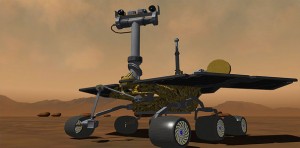May 19
Microsoft Robotics Developer Studio
Microsoft's Robotics Platform
Have you overheard people talking about Microsoft’s Robotics Platform and perhaps you’re wondering what all the excitement is about? Maybe you’ve read a little bit about it already and you’re currently seeking more information. No problem! I’ll be more than happy to explain it to you.

In 2006, Microsoft released a software program that was at that time known as Microsoft Robotics Studio. They decided to do this when they realized that the robotics communities were in need of a program that would offer a mature platform as well as a toolset that would provide both stability and portability. One great benefit of this was that it allowed more people to participate in and consequently contribute to robotics projects.
A few years down the road, Microsoft then released a preview version of its Robotics Developer Studio 2008. This newest version contains several improvements including a feature that allows users to record simulation tests which can then be played back at a later time for review.
It also offers a new floor-plan editor as well as many other tools that weren’t available in the 2006 version. Microsoft’s Visual Programming Language has been designed to make it very easy for anyone to easily create and debug robotics programs, even if they are non-programmers.
In fact, all you need to do is drag and drop blocks that are representative of various services and then connect them. It also has the capacity to take a group of blocks and then reuse them as a single block at other places in the program. MVPL distinguishes itself from other Microsoft Programming Languages like Visual Basic.
It does this by being the only Microsoft language that is truly a visual programming language. With this program, you can create applications that allow remote monitoring and control of a robot, which is done through the use of a web browser.
Also, their Decentralized Software Services (DSS) feature makes it simple to be able to gain access as well as respond to a particular robot’s state. This is again done through the use of either a web browser or a Windows based application.
If you’d like to give this program a try, it’s currently available in three editions. You can download the express edition for free, and a standard edition and the academic edition are also available. Thank you for taking the time to read this article, and I hope that you’ve found it to both interesting and informative.
Filed Under: Featured, Robot Programming, Robotics
